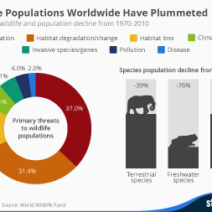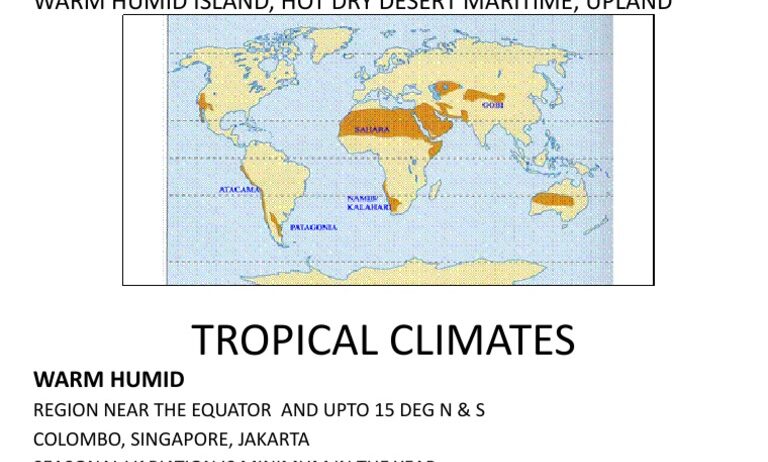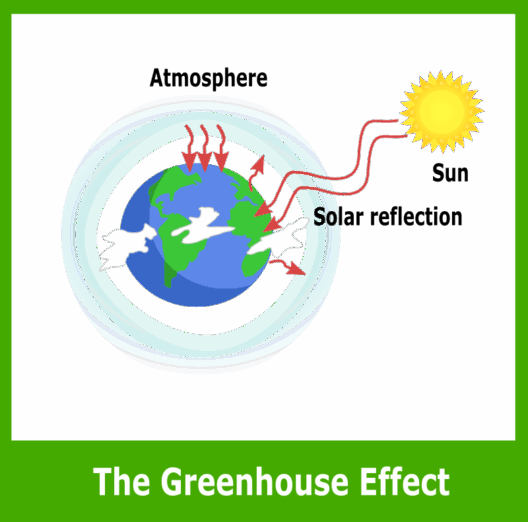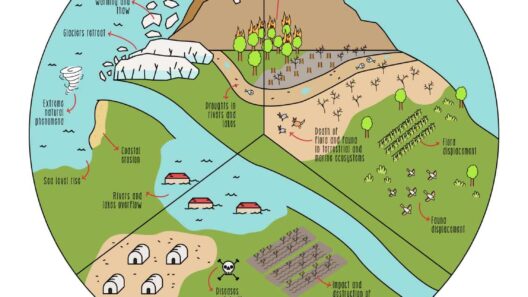Tropical Climates: The Essence of Warmth and Vitality
Tropical climates are often enveloped in an aura of mystique and allure. Characterized by high temperatures and humidity, these regions are teeming with life, from lush jungles to vibrant coral reefs. Understanding tropical climates is not just about appreciating their beauty; it is crucial for environmental science, conservation efforts, and even global agriculture. This article delves into the intricate facets of tropical climates, addressing common concerns and illuminating their significant impacts on our planet.
The Defining Features of Tropical Climates
When we speak of tropical climates, we primarily refer to areas situated near the equator, within the tropics, between the Tropic of Cancer and Tropic of Capricorn. These regions typically exhibit three fundamental characteristics: consistent high temperatures, abundant rainfall, and a distinct wet-dry seasonality.
High temperatures are a hallmark of tropical climates. Averaging between 20°C to 30°C (68°F to 86°F) year-round, the warmth provides a hospitable environment for numerous organisms. It is not merely the heat that defines these climates; it is the relentless sun, which bathes the land in light, fostering an ecosystem that thrives on photosynthesis and growth.
Rainfall is another essential feature. Tropical climates enjoy a significant amount of precipitation, often exceeding 2,000 mm (79 inches) annually. However, the distribution of this rainfall varies greatly. Some areas, such as tropical rainforests, experience near-constant rain, while others, such as tropical savannas, undergo prolonged dry seasons. This variation in rainfall contributes to the extraordinary diversity in plant and animal life.
Moreover, tropical climates are typified by their biodiversity. The combination of warmth and moisture creates ideal conditions for the proliferation of an array of species, from towering trees to colorful birds. With over half of the world’s plant and animal species residing in tropical ecosystems, this vibrant habitat is essential for global ecological balance.
Types of Tropical Climates
Within the broad designation of tropical climates, distinct subtypes emerge, each with unique characteristics. Primarily, these can be divided into tropical rainforests, tropical savannas, and tropical monsoons.
Tropical Rainforests: The Lungs of the Earth
Tropical rainforests are perhaps the most iconic representation of tropical climates. With dense canopies protecting a plethora of species, these rainforests are vital for carbon sequestration and oxygen production. The Amazon Basin, the Congo Basin, and Southeast Asia’s rainforests are prime examples, showcasing one of the most diverse ecosystems on the planet.
The flora found in these rainforests is astonishingly varied, featuring enormous trees, sprawling vines, and a mosaic of understory plants. These ecosystems are foundational to indigenous cultures and serve as essential resources for medicinal plants, food, and shelter.
Tropical Savannas: Warm Grasses and Life
In contrast to the lush rainforests, tropical savannas exhibit a more open landscape. Characterized by grasslands adorned with sporadic trees, these regions reflect the ebb and flow between dry and wet seasons. The presence of large herbivores, balanced by natural predators, creates a unique food web that sustains various animal populations.
Famous for their wildlife, African savannas, like the Serengeti, have become synonymous with biodiversity. However, the threats from human encroachment and climate change persist, threatening the delicate balance of these ecosystems.
Tropical Monsoons: A Dance of Seasons
Tropical monsoons present yet another fascinating aspect of tropical climates. Typically characterized by predictable wet and dry seasons, these climates are usually found in South Asia and parts of Africa. The monsoon winds bring heavy rains that nourish the land and replenish waterways, vital for agriculture. The seasonal nature of this climate significantly impacts agricultural practices, shaping the life and economy of the region.
The Risks and Challenges of Tropical Climates
While tropical climates are indeed teeming with life, they also face significant challenges. Deforestation, often driven by agriculture, threatens the delicate balance of these ecosystems. The need for sustainable practices is paramount to preserve the biodiversity that exists within these regions.
Additionally, climate change poses a significant risk. Increasingly erratic weather patterns, rising temperatures, and shifting rainfalls are jeopardizing the health of tropical ecosystems. These changes can lead to habitat loss, degradation, and reduced species diversity, endangering the very fabric of tropical life.
Moreover, tropical climates are more susceptible to extreme weather events such as hurricanes, thunderstorms, and floods. These events not only affect human populations but also severely disrupt local wildlife, leading to further ecological imbalance.
Conclusion: The Vitality of Tropical Climates
The enchanting realm of tropical climates serves as a reminder of our planet’s beauty and fragility. These regions are not just vibrant with life; they are crucial to the Earth’s ecological equilibrium. Recognizing the challenges they face is essential for fostering a sustainable relationship with our environment.
By understanding tropical climates, we can appreciate their importance and advocate for their preservation. Without concerted efforts, the rich biodiversity that thrives in these areas may diminish, leaving an indelible mark on the planet and future generations. Embracing sustainability is not merely a choice; it is a necessity for the future health of tropical ecosystems and, by extension, our planet.







